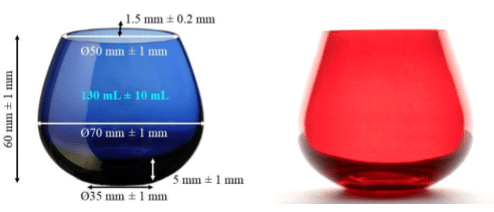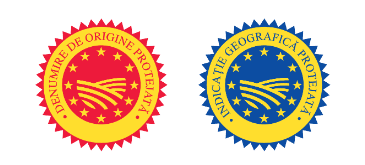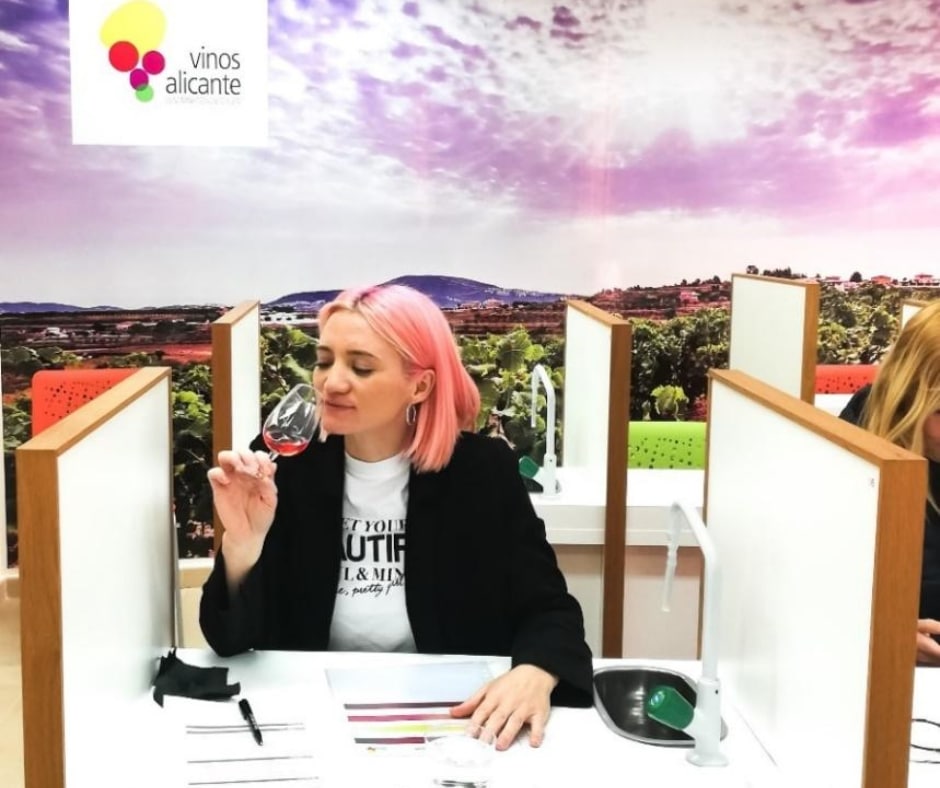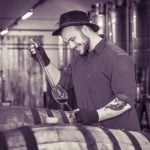Sensory analysis is a scientific tool that measures and analyses human responses to the chemical composition of food, and these responses are perceived through the five senses: touch, sight, hearing, smell, and taste.
Sensory analysis
History
Sensory evaluation has appeared practically since the beginning of civilization, both for food and for any other goods. However, in the early 1900s, the professional taster of food, drink, and cosmetics appeared.
Sensory methods using a trained panel of tasters first appeared in World War II when it was found that the rations provided to American soldiers, although nutritionally correct, were completely unappetizing, which is why they were constantly rejected by American soldiers.
After the War and up until the 1960s, US armed forces laboratories pioneered food acceptability research. The next phase in the progress of sensory analysis was marked by the implementation of quality control systems in the food industry, and it was used both as a quality control tool and in research and development of new products, environmental odors, personal hygiene, disease, and many other areas.
Definition
Sensory analysis is a scientific tool that measures and analyses human responses to the chemical composition of food, and these responses are perceived through the five senses: touch, sight, hearing, smell, and taste.
Sensory analysis methods
Sensory methods fall into two broad categories: analytical (discriminative and descriptive) and affective:
- Discriminative analytical methods are the simplest procedures, in which trained assessors are asked and forced to answer whether the samples are different or not.
- Descriptive analytical methods are carried out with a minimum of 5 and a maximum of 10 tasters (tasting panel), who in turn are selected, trained and qualified to show analytical thinking, which allows them to evaluate samples objectively, giving correlating scores using specific scales (usually 10 or 6 points scale) and a specific lexicon, used since the training period. In other words, descriptive methods can calibrate people to work as "analytical tools", generating standardized responses, due to the training of tasters with reference products, to be able to quantitatively assess each sensory descriptor in the tasting sheet.
- The affective method uses hedonic scales and asks consumers or untrained evaluators (but consumers of the product being studied) about their preferences and acceptance of the product, eliciting subjective but valuable responses to understand consumer preference before the product is launched on the market.
How a panel of tasters works in Spain
A panel of tasters is a powerful quality control tool and is increasingly used in Spanish companies. Both the food and feed industry, as well as supermarket chains, cosmetics, pharmaceutical, and other industries, understand the importance of sensory analysis and use it before launching any product on the market.
There are foodstuffs, such as olive oil ,where sensory analysis is mandatory (Figure 1). European Commission Regulation (EEC) No 2568/91 defines the physico-chemical and organoleptic characteristics of olive oil and olive-residue oil (pomace, marc) and lays down the methods for evaluating these characteristics.

Figure 1. The official olive oil-tasting glass
The panel of tasters is mandatory in the certification of products with a Protected Designation of Origin (PDO) or Protected Geographical Indication (PGI). PDO and PGI are indicators used in the European Union to guarantee a differentiated quality of products due to the geographical environment in which they have produced and of course the influence of the human factor involved in their production.
In other words, these indicators identify a product that comes from a specific place (e.g. PDO Vinos de Alicante / PDO Banat) with a close relationship between the specific characteristics of the product and the geographical environment of the area. Spain is one of the countries with the highest number of PDO/PGI products, together with France and Italy. As for wines, Spain has a total of 143 PDO+PGI, of course, with an area at least 3 times larger, while Romania reaches 46 PDO+PGI.
The sensory characteristics of products covered by a PDO/PGI play a fundamental role in their specificity and authenticity. The sensory evaluation of a PDO-protected product acts, on the one hand, by guaranteeing both the exceptional quality of the product and its authenticity and, on the other hand, by guiding consumers in their decision to buy the product.
In Spain, each PDO/PGI has a body in charge of
- regulating and standardizing the actions of all participants (wineries/vineyards) protected by that PDO/PGI;
- responsibility for the effective observance of these regulations.
This body is called Consejo Regulador or Regulatory Board.
Therefore, the control of these PDOs and PGIs is done through the accreditation of the Regulatory Board by the Spanish public accreditation body called the National Accreditation Body (ENAC), of which I am a member.
In this way, PDO/PGI products are certified by the Spanish Regulatory Councils through the EN 45011 Standard, ensuring the maintenance of product quality and allowing product differentiation, providing added value and greater market competitiveness.
Describing the uniqueness of the products with Designation of Origin by sensory means is one of the most important requirements that a PDO product must fulfill. As I wrote above, the essential tool for the description and evaluation of sensory quality is the tasting team/ panel , as it is the only way to ensure that the products comply with the sensory parameters defined in the specifications of any PDO/PGI and published in the Official Journal of the European Union, available in e-Ambrosia.
Therefore, the tasting team has basically 2 important functions:
- it allows the definition of sensory typicality by detailing those sensory descriptors, which differentiate it from other products, which do not have this quality indicator;
- it ensures that products protected with the PDO/PGI logo (Figure 2) meet the characteristics defined above.

Figure 2. European PDO/PGI quality logos
In order to obtain ENAC accreditation and to be able to certify that the products are protected by a PDO/PGI, the team of tasters must comply with the UNE-EN ISO/IEC 17025 standard.
Implementing a panel of tasters is a laborious process, comprising the following steps:
- Training the person who will be officially declared responsible for the tasting panel.
- Recruiting and selecting potential panel candidates.
- Selection of tasters
- General training of tasters
- Establishing the sensory characteristics of the products, according to the specifications (preparation of the lexicon with sensory descriptors and definitions).
- Preparation of the test method for the development of sensory analysis procedures.
- Preparation of the tasting sheet
- Specific training with the team of tasters according to the selected method.
- Qualification of tasters (usually, a taster is considered fit when his/her opinion does not deviate in a certain percentage (set by each PDO/PGI) from the other colleagues and the whole team.
How can you become a professional taster in Spain?
Anyone can apply for the recruitment, as long as they are available, motivated, and without sensory abnormalities, allergies or intolerances. Usually, recruitment can be done within the company itself (by selecting internal staff, avoiding selecting those who are experts in the product to be tested) or externally, through a call published in the media, the company’s consumer database, social networks, and the like.
Recruiting staff from the same company can be beneficial, as the staff is available on-site, involves less investment in remuneration, ensures greater confidentiality, and provides greater stability over time. On the other hand, these people are very influential due to their knowledge of the product, have low availability and this can often be a problem when training.
External recruitment increases the number of candidates (this is always synonymous with better selection), brings new points of view on the product, avoids internal problems (hierarchy), and facilitates greater availability of judges (defined before recruitment starts). At the same time, it involves a greater investment and generates greater instability in the team (higher probability of abandonment once it is already in place).
The tests used for the selection of sensory judges aim at knowing their ability to respond to sensory stimuli and familiarizing them with the methodology and materials used in sensory analysis.
Those who are selected, already have some of their native training and have qualities that facilitate their perception in the sensory evaluation process. These tests can be classified into 3 types:
- those that seek to find disabilities in tasters
- those seeking to determine sensory accuracy
- those that assess the potential of judges to describe sensory perceptions.
Finally, the people who pass all the tests are selected to be part of an official team of tasters. (Figure 3) This team will be specifically trained, using reference products for each descriptor, so that they will be able to think analytically and evaluate PDO products objectively, always taking into account the method used at the time of training.
It’s not an easy job, it involves physical and mental efforts, but it is exciting, rare, and with a high degree of responsibility. All to facilitate consumers’ access to products that are compliant, correct, and thoroughly controlled by specialists.







